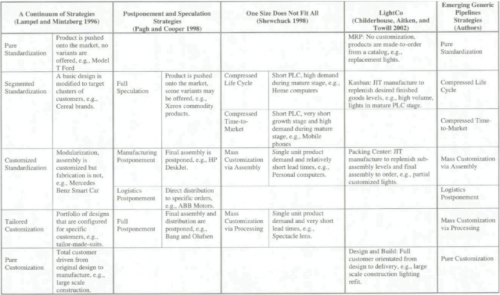Managing Supply Chains with multiple Pipelines
Companies offer a smaller or larger range of products serving different markets, depending on their history and primarily the respective business model.
From a supply chain management point of view this poses the question if it is ok just to use the same supply chain strategy for all those products.
Pipelines vs. Supply Chains
Aitken et al. (2005) make a convincing argument against this approach and instead suggest the “pipeline” to describe
the specific operational mechanisms and procedures that are employed to service specific product/market contextswithin one supply chain.
So one supply chain usually contains several different pipelines.
Case Study
The authors conducted a case study with a lightning company producing a range of lighting products for diverse markets.
During the four year project there were two major phases: first the introduction of lean production, and second increasing the responsiveness of the plant.
Four different pipelines were identified by clustering the products. The clusters were defined by considering the trade off between economies of scale, economies of scope and the diseconomies of averaging.
- Cluster 1: low volume products
- Cluster 2: high volume, low variant products
- Cluster 3: multiple variants of standard products
- Cluster 4: customized products
Pipeline Strategies
Different pipeline strategies were identified and are listed in table 1.
Conclusion
Pipelines are a useful way of differentiating supply chain and selecting the right strategies depending on the market and product properties. Aitken et al. describe a normative scenario, in practice differences in supply chains are often due to missing integration of different parts of a company (eg. after a merger). But especially in those cases it is necessary to develop an approach for reintegration without loosing sight of the different needs of the customers.
Aitken, J., Childerhouse, P., Christopher, M.G., & Towill, D.R. (2005). Designing and Managing multiple Pipelines Journal of Business Logistics, 26 (2), 73-95









Add new comment